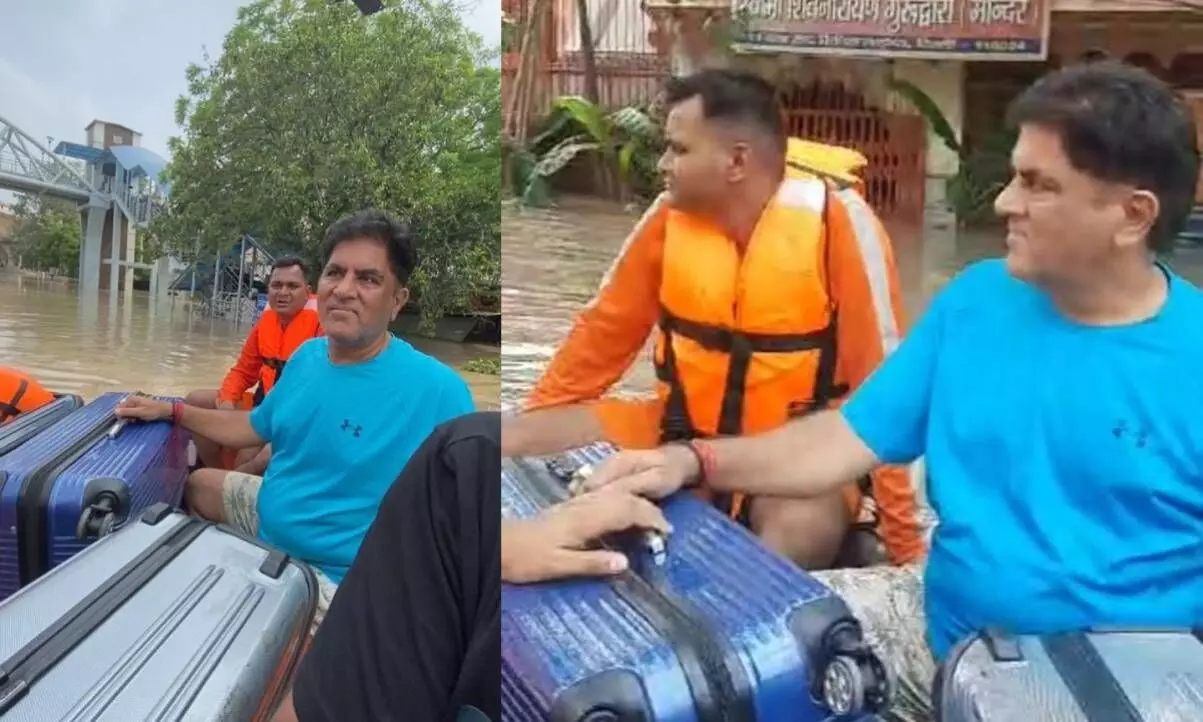Why Delhi, Mumbai, Bengaluru infrastructure is in tatters
Time to save our big cities
image for illustrative purpose

Barely two months before New Delhi has to host prestigious G-20 summit that would be attended by head of states of 20 most powerful nations of the world, the national capital is in tatters due to flood in river Yamuna and heavy rains. If the flood waters have entered the houses of rich and poor, the water logging across the capital have exposed the callous attitude of all those who are supposed to look after the civic affairs of the city.
Imagine the flood waters of Yamuna have entered the plush houses of rich and famous in Civil Lines area. This place is at a shouting distance of the official residence of Delhi’s Chief Minister Arvind Kejriwal. Even the Managing Director of famous Sadhna TV Rakesh Gupta and his family was saved by the jawans of NDRF as the gushing flood waters have entered his spacious house. Luckily, NDRF jawans took Gupta’s family in boats to safe place. Shocked Rakesh Gupta, who is also a well-known TV personality, says, “ It was an life time experience for him and his entire family as the flood waters have swiftly entered his basement and first floor of my house.” Rakesh Gupta was feeling sorry for all those who have lost everything due to floods.
Surely,the worst part of current crisis in Delhi is that despite such a serious scenario where lakhs of people were facing tough time, the AAP-led Delhi government and the BJP dispensation are locked in a blame-game over cause of flood. Delhi’s Flood and irrigation control minister Saurabh Bharadwaj claimed that despite receiving several letters from the Delhi government, the Haryana government did not hand over the control of the ITO Barrage to it. "BJP has been continuously lying. After seven days, its government in Haryana has accepted that it controls ITO Barrage. Now after getting exposed, BJP has found a new excuse that the Delhi government did not maintain the barrage," alleged Bharadwaj. Denying the charges of Delhi’s minister, Haryana CM Manohar Lal Khattar said Delhi couldn't "defame" his state with such allegations. Of course, this blame-game is not good. It is neither in the interest of humanity, nor the two states or the country.
Meanwhile, all those who look after the affairs of our cities must look within and ask: Why our cities are not worth living? As they offer jobs, people from small towns to villages throng big cities to earn their livelihood.
We have seen almost all the major cities like Mumbai, Gurugram, Hyderabad, Chennai and Bengaluru flooding in the monsoon season. This is alarming state of affairs. We have to accept that this situation is happening because we are not prepared to handle the amount of rainfall or floods. With global warming, the southern peninsula will get more and more rains as days goes, and even if we do the corrective measures, it will take years for it to reverse itself.
Most of our streets are running like streams and rivers during the rainy season. It is high time that city administrations need to pass certain laws to manage this. For example, we think the pavements on which we walk must all be concrete. No, it can be done in such a way where there is a stabilized surface and at the same time enough spaces for rain water to sink into the land. This needs to happen.
In both Delhi and Chennai, people have built their homes on the river bank, on the floodplains, and they get washed away after one big rain. In a year, it is again dry and people have already forgotten about it and build something again. In Delhi, even the government has built huge housing projects, transport department offices and temples.
And if we talk about Gurugram, one feels like shedding tears. Also known as the Millennium City, it is full of major IT, Finance and Banking sector companies of the world and thousands of professionals from other countries live there. Spare a thought that what impression they would make for the town planners of India as the so-called most modern city cripples as and when there is a heavy rain.
It is high time that Indian town planners make our cities live able.
India is urbanising rapidly. According to the World Bank, approximately 35 percent of the country’s population lives in urban areas. This figure is expected to increase—projections by the UN indicate that by 2050 more than 50 percent of India’s population will be urban. However, contemporary Indian cities are plagued by problems such as inadequate housing, unequal access to sanitation and water services, and poor public health. If we expect our cities to adequately serve their residents, they need much better infrastructure.
What sort of infrastructure do India’s cities really need? Surely, we have to create infrastructure in our cities that are long lasting and people’s friendly. We do not afford our bridges to crumble within couple of years of inauguration and roads sink in rainy weather. In the last couple of months, we have read news related to collapse of bridges often. Now even yet to be inaugurated bridges are crashing down. A 206-metre-long bridge constructed over river Burhi Gandak came crashing down in Begusarai district couple of month back in Bihar. The bridge, constructed at a cost of over Rs 13 crore. This speaks volumes about corruption that has seeped in our system. One must fight the menace of corruption without any delay. Unless we root out it, we cannot expect to create world class infrastructure. Till then we cannot make our cities worth living.
(The author is Delhi-based senior journalist and writer. He is author of Gandhi's Delhi which has brought to the forth many hidden facts about Mahatma Gandhi)

